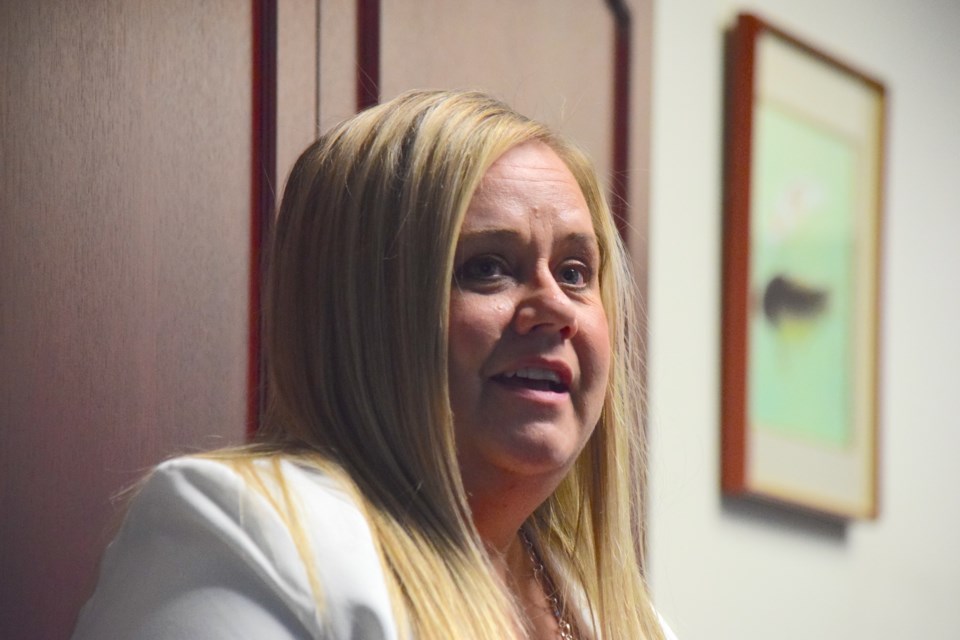BARRHEAD - In theory, it is a good idea, but Town of Barrhead councillors said they needed more information to determine whether a new ABMunis-administered program is right for the municipality.
At their Oct. 22 meeting, councillors instructed the administration to gather more information on the Clean Energy Improvement Program (CEIP), specifically how the initiative has worked in other municipalities, for their upcoming 2025 budget retreat.
ABMunis is an advocacy group that works to lobby the provincial and federal government on issues concerning its members (summer villages, villages, towns, cities, and other specialized municipalities). It represents roughly 260 members, including the towns of Athabasca, Barrhead and Westlock.
Corporate services director Jennifer Mantay, who recently participated in a webinar on the program, described the CEIP as a financing initiative designed to reduce the barriers for property owners to install energy efficiency and renewable energy upgrades.
"It is a program where the municipality can loan money to property owners for energy efficiency upgrades in their houses, and they pay it back over multiple years through their property taxes," she said, adding that although there is a small admin fee, CEIP is intended to be revenue neutral.
Later in her presentation, Mantay said the payments for the CEIP can be no more than the municipal portion of a homeowner's annual property tax.
Coun. Ty Assaf interjected, saying the amount of property tax is primarily based on assessment, and asked what happens if the property's assessment value causes the property taxes to be lower than when the loan was issued.
Mantay replied that she understood the payments would be based on the property taxes at the loan's inception.
She also noted that the loan is attached to the property, not the homeowner.
"So if the property owner sells the property, the new owner would have to continue making the [CEIP] payments if there were still monies owed," Mantay said.
Benefits of the program
Mantay said one of the program's benefits, in addition to those to the property owner, is an increase in local jobs.
She added property owners must get the work done by an eligible ABMunis contractor.
"If a company a homeowner wants to use is not on the ABMunis, it is a fairly simple process for them to be added to the list," Mantay said.
She noted that the program also "builds a more resilient building stock" by allowing homeowners to complete energy-saving renovations they may not have otherwise been able to.
"Then there are the benefits of achieving sustainability goals by reducing greenhouse gases," Mantay said.
Why homeowners would choose CEIP
Mantay said the main reasons homeowners would opt for a CEIP loan are the extended repayment period of up to 25 years and low interest rates, up to a maximum of five per cent.
She explained repayment periods are based on the lifespan of the upgrade.
"If you are looking at upgrading doors and windows, ABMunis gives it a lifespan of 10 years; that is how long they have to pay [the loan] back," she said, adding there is also a lot of technical support available through ABMunis for both homeowners and contractors.
Mantay said the municipality also has minimal risk as the loan is attached to the property, not the participant.
Steps needed to enact the CEIP
Mantay said one of the first steps is for council to decide how they will fund the program.
She said that while ABMunis administers the program, the municipalities provide the loan-funding pool.
"Some municipalities use internal reserves, while others take out a line of credit," she said, adding the minimum pool to start is $15,000.
Mantay said the municipality would also have to create a bylaw laying out the conditions loan applicants must meet to be eligible for the program.
"The bylaw could also dictate what properties are eligible," she said. "For instance, some places limit it to residential areas only."
Mantay said the municipality could also cap the loan pool's amount and the amount that can be withdrawn at one time.
"It really is very flexible, and it would be up to council to craft the bylaw to the municipality's needs and goals according to its priorities," she said.
Mantay said that while the program is relatively new, several municipalities have signed up, the closest being the Town of Westlock.
It should be noted that the Town of Athabasca has also signed on to CEIP.
Related link: https://www.townandcountrytoday.com/westlock-news/launch-of-clean-energy-improvement-program-slated-for-oct-31-7743884
"They've got about 15 applications right now in the year the program has been running, with only one going from start to finish," she said.
Coun. Rod Klumph asked what happens if the property owner reneges on their obligation.
Mantay said the municipality would initiate its tax recovery procedure, as the CEIP loan is tied to the property tax roll.
Coun. Dave Sawatzky and Coun. Dausen Kluin, and Coun. Don Smith voiced tentative support for the program, saying it could potentially be very beneficial to the community and homeowners. However, they said they needed more information before making a decision.
"It would be good for our local businesses as they would be given an opportunity to get into a new line of business that they haven't thought of. People could potentially increase their property values and make our community look better," Sawatzky said. "There a fair bit of upside at a very low risk, but we have to determine if it is right for our community, where we get those funds from, and make sure we get a return from them."
Mayor Dave McKenzie agreed but said the question for him is where the municipality would get the biggest return.
"For us fronting the principal, are we gaining through [CEIP] more than we would through our term deposits," he said. "We have to be fair to our taxpayers."
Klumph and Kluin called it an "interesting idea," but they said he would like to hear from the municipalities that have instituted the program before making a final decision.
Barry Kerton, TownandCountryToday.com



